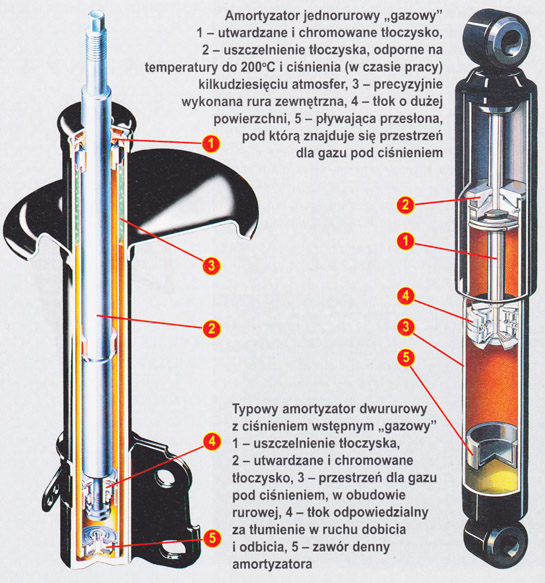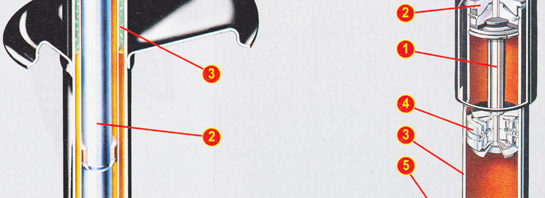 Shock absorbers more important than you think – Most drivers are careful, that shock absorbers only affect the comfort of driving the car. And actually, damping forces, provided by the suspension constructor, affect it, if the car jumps and shakes, overcoming unevenness or small holes in the road, they do not make an impression on the car and passengers. Few of the car users know, that driving safety depends on shock absorbers. Meanwhile, the issue of selecting shock absorbers is extremely complicated and significantly affects both of these issues.
Shock absorbers more important than you think – Most drivers are careful, that shock absorbers only affect the comfort of driving the car. And actually, damping forces, provided by the suspension constructor, affect it, if the car jumps and shakes, overcoming unevenness or small holes in the road, they do not make an impression on the car and passengers. Few of the car users know, that driving safety depends on shock absorbers. Meanwhile, the issue of selecting shock absorbers is extremely complicated and significantly affects both of these issues.
The task of the shock absorber is to dampen the relative movements of the vibrating system of two sprung and unsprung masses, that while driving, each wheel of the vehicle constantly adheres to the ground. The laden body is a sprung mass, and the movable parts of the suspension together with the running wheels - an unsprung mass. The car would probably behave, if using spring elements with high stiffness and damping. Then the wheels would not detach from the ground, and minimal body roll would result in a relatively constant contact surface of each tire to the road. But only racing car suspensions can be constructed in this way. In fact, the design of the suspension, and thus the operation of the damper is the result of a far-reaching compromise.
The shock absorber is this device, which ensures constant contact of the wheels with the road, even if it is uneven. When the damping of the shock absorbers is insufficient, each of the wheels, and consequently the entire vehicle, begins to bounce like a springy ball. It's not hard to understand, that under such conditions, the car drives poorly and brakes ineffectively. A bad shock absorber on a car with ABS brakes is a source of extra trouble. When the wheels bounce, ABS detects this phenomenon as a loss of grip, thus reducing the braking force unnecessarily. It is also worth mentioning the research, recently carried out by Monroe. Winter braking tests were performed, in a straight section and in a bend, a car equipped with ABS and functional shock absorbers and the same vehicle with shock absorbers with the damping capacity artificially lowered to 50%. The study showed, that a car with inferior shock absorbers braked with 50 km / h stopped on the road about 23% longer than those with functional shock absorbers. Second test, arc braking at speed 30 km/h, showed, that the ABS is unable to cope with the bouncing front outer wheel, which gets blocked, the car skids and leaves the track, moving on a tangent to a bend. When the shock absorbers are operational, ABS reduces wheel lock and the car comes to a stop, driving in a curve.
The problem is the durability of the shock absorbers. The trouble is from here, that shock absorbers relatively rarely fail completely and immediately, and the damping efficiency drops imperceptibly.
